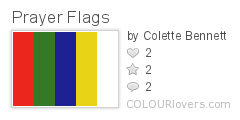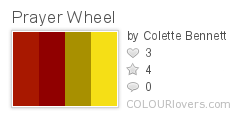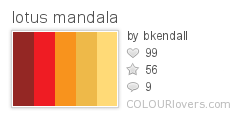Whether religion figures prominently into your life or you choose to try to solve the mysteries of existence without its guidance, anyone can admit there is something about the act of believing in a power greater than yourself that has tremendous appeal. Faith can lead people to express their feelings about what they believe in in a myriad of ways. One of the ways seems to be through color, as many of the world’s religions display a vivid palette in the ways and hows of their worship.
 Photo by wonderlane
Photo by wonderlane
The Robes of Monks
Tibetan monks are one of the first things one thinks of when it comes to the presence of color in religion. Their saffron robes make for a bright contrast to the solemnity of their practice. Buddha was said to have worn a monk’s robe made of patches of donated cloth, so the monks wear these robes in honor of his memory, and also to draw contrast between themselves and the physical world in their quest to attain enlightenment.
Another familiar image is of the Gelukpa monks, who are of the same sect as the Dalai Lama. These monks often wear yellow, pointed hats that draw to mind the image of a plumed helmet. Chinese and Korean monks wear brown or blue robes instead of the more commonly recognized orange that Tibet favors, and Japanese monks wear black or grey robes, leaving strong color out altogether.
 Photo by anna pearson
Photo by anna pearson
 While most people also think of Tibet when then think of prayer flags, they are believed to have originated from Tibet’s oldest religion, Bön, which actually predates Buddhism. There are two types of prayer flags: Lung Ta, which are the horizontal flags, and Darchor, which are vertical. Lung Ta are commonly hung on a long line that resembles a clothesline, while Darchor are usually hung on poles along their vertical edge.
While most people also think of Tibet when then think of prayer flags, they are believed to have originated from Tibet’s oldest religion, Bön, which actually predates Buddhism. There are two types of prayer flags: Lung Ta, which are the horizontal flags, and Darchor, which are vertical. Lung Ta are commonly hung on a long line that resembles a clothesline, while Darchor are usually hung on poles along their vertical edge.
 Photo by the big durian
Photo by the big durian
Prayer Flags
 While the flags may look randomly colored at a glance, you can recognize a pattern with a careful eye. Each flag comes in a set of five, and each color has a specific meaning. The five colors relate of the five elements of wind, water, earth, fire and air, and relate to specific traditions and purposes. A closer look at a prayer flag will usually reveal a symbol on its back. That is called “Ta”, meaning powerful or strong horse. The symbol is also thought to represent the transformation from bad to good fortune. Three flaming jewels can be seen in the Ta, which represent the Buddha, the Dharma (teachings), and the Sangha (Buddhist community).
While the flags may look randomly colored at a glance, you can recognize a pattern with a careful eye. Each flag comes in a set of five, and each color has a specific meaning. The five colors relate of the five elements of wind, water, earth, fire and air, and relate to specific traditions and purposes. A closer look at a prayer flag will usually reveal a symbol on its back. That is called “Ta”, meaning powerful or strong horse. The symbol is also thought to represent the transformation from bad to good fortune. Three flaming jewels can be seen in the Ta, which represent the Buddha, the Dharma (teachings), and the Sangha (Buddhist community).
 Photo by babasteve
Photo by babasteve
Mandalas
Mandalas are another commonly recognized symbol of faith, originating from the Hindu but now used in many other Indian religions. The Vajrayana branch of Tibetan Buddhism has developed them using sandpainting. Often after the sandpainting is complete, the monks destroy the careful work they have created and spread the contents into running water, not only to spread the blessings of the mandala but reinforce the theme of impermanence.
 Photo by nospuds
Photo by nospuds
These are not the only colors of religion, but surely some of the most memorable. What colors do you think of when it comes to faith?

